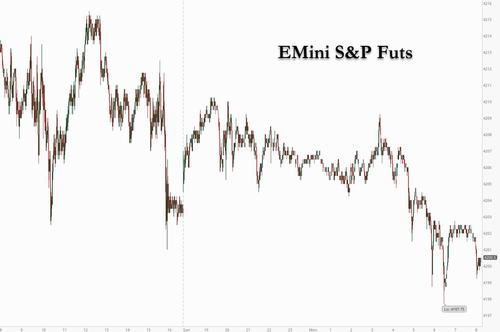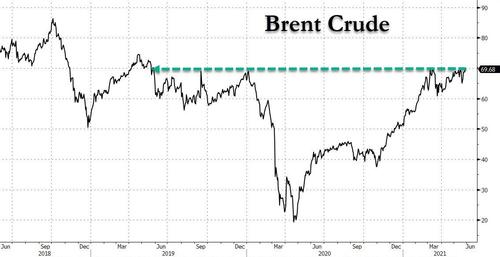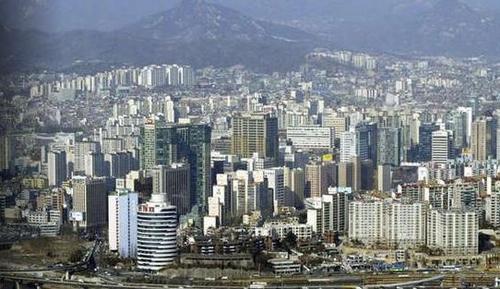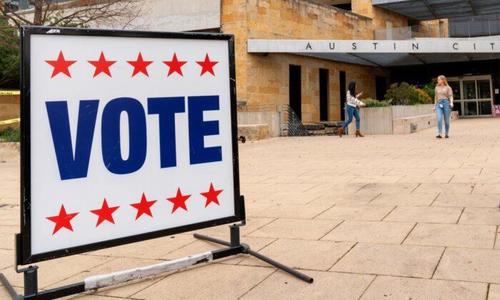It was anything but “sell in May”…
With US markets closed for Memorial Day, Emini futures traded virtually at 4,200 amid light volumes as world stocks were firmly on track to post a fourth straight month of gains on Monday. MSCI’s index of world stocks drifted 0.1% higher, putting the gauge on track for a 1.4% gain for May. It is the longest monthly rising streak for the index since August 2020, when it marked a five-month run of gains, according to Reuters.
S&P 500 and Nasdaq 100 futures swung between small gains and losses amid shortened trading hours due to the Memorial Day holiday in the U.S. The dollar was steady against a basket of peers.

The dollar continued to struggle ahead of a slew of European and U.S. data this week that will provide a clearer picture on the global economy’s recovery path, while Brent was trading just shy of $70 after OEC
With US traders out, European stocks struggled for direction as markets awaited fresh catalysts, with the US payroll data later this week set to provide further clues on the outlook for the biggest economy. Europe’s Stoxx 600 index fluctuated in a narrow range. Spain’s Endesa SA dragged the utilities sector lower following reports the Spanish government is preparing to rein in windfall profits for power producers. Deutsche Bank AG dropped after the Federal Reserve warned that its compliance programs aren’t adequate. U.K. markets were closed for a holiday. Here are some of the biggest European movers today:
- Cattolica jumped as much as 14% in Milan trading after Assicurazioni Generali offered to buy all the shares it doesn’t already own in the Italian insurer at EU6.75 apiece in cash.
- Norwegian Air gained as much as 13% after the battled airline resumed flying in Sweden on Monday. The company said it will offer 31 destinations from Stockholm and two from Gothenburg in the summer.
- Spanish utilities fell Monday with Endesa down as much as 5.4% after reports during the weekend that the government is preparing to rein in so-called windfall profits from nuclear and hydraulic energy plants.
- Solutions 30 shares slumped as much as 14% after the technology-services company said it will hold its annual shareholder meeting and a special meeting on June 30 although it hasn’t yet chosen a new accounting firm, while the company’s auditor refused to certify 2020 accounts.
Earlier in the quiet session, Asian stocks rose with the benchmark gauge on track to outperform the S&P 500 Index for the first month since January. The MSCI Asia Pacific Index went up 0.3%, buoyed by shares in Indonesia and Taiwan. China’s CSI 300 Index closed 0.2% higher Monday, extending gains after its best weekly surge since February on the back of record foreign buying of local stocks. Meanwhile, Malaysian stocks were among the day’s biggest decliners, with the benchmark index sliding 0.7% after the government imposed a two-week nationwide lockdown to curb a surge in Covid-19 infections. Shares in Japan and the Philippines also fell. Still, the Asian gauge is poised to gain more than 1% in May, in its second straight monthly advance as inflation concerns ease globally and the dollar weakens. The MSCI Emerging Markets Index, in which China has the largest weighting, climbed 1.1% Monday to its highest level since March 4. “We expect equities to nudge higher on strong earnings,” Nomura Holdings Inc. strategists led by Chetan Seth wrote in a mid-year outlook report on Asia Pacific equities. “Modest tightening of global liquidity in 2H implies multiples remain constrained and thus earnings growth/revisions will be the key to take stocks higher.” The brokerage has a year-end target of 900 for the MSCI Asia ex. Japan Index, implying a 1.8% upside from its Friday’s close.
Japanese stocks fell as investors took advantage of Friday’s rally to trim holdings as they assess the economic impact of the state of emergency for the nation’s major cities. Electronics makers and machinery companies were among the heaviest drags on the Topix, after being some of the biggest boosts to the gauge’s jump at the end of last week. SoftBank Group was the top contributor to the decline in the Nikkei 225 Stock Average after a report said Credit Suisse Group AG will no longer do any new business with the Japanese firm. Shares of Renesas Electronics Corp. slid after the Japanese automotive chip maker announced that it will raise $2 billion from a stock sale to fund its purchase of Apple Inc. supplier Dialog Semiconductor Plc. “Japanese equities are prone to a selloff” given the gain on Friday, said Hajime Sakai, the chief fund manager at Mito Securities Co. in Tokyo. Whether the Nikkei 225 can head back toward 30,000 “will depend on how soon the country can go back to normalizing economic activity,” he said. Shares are underperforming the broader MSCI Asia Pacific Index after economic figures illustrated the pandemic’s impact. While factory output increased at a faster pace in April, retail sales dropped last month. Domestic demand remains subdued amid another virus wave and a third state of emergency the government extended last week until June 20. Shoji Hirakawa, the chief global strategist at Tokai Tokyo Research Institute, said the Nikkei 225 may waver near 29,000, a key psychological level for the market. The blue-chip gauge closed above that level for the first time in almost three weeks on May 28, while the Topix climbed the most since March 1
Despite the popular mantra that this is the month to sell, May has proven to be a decent month for asset markets but that may not last as policymakers are increasingly faced with the dilemma that inflation is running hot while the underlying structural economy is still struggling to gain traction. The Fed is facing growing pressures to taper between record usage of its reverse repo facility (as half a trillion dollars are now parked at the Fed earning nothing due to a monster liquidity glut), and surging inflation which may or may not be transitory.
Until then, however, sentiment is bullish with global stocks trading near a record, lifted by the ongoing economic recovery from the pandemic and injections of stimulus. The rally has so far weathered concerns that price pressures could force an earlier-than-expected reduction in central bank support. But investors remain sensitive to the risk, and Friday’s U.S. non-farm payrolls report could buffet markets if it changes perceptions of the rebound’s strength.
“Policy makers have committed to accepting a higher level of inflation, higher volatility in inflation and as that happens you will see inflation moving structurally higher,” Mixo Das, JPMorgan Asia equity strategist, said on Bloomberg TV. “I don’t think this is in the prices yet.”
“The question is, therefore, whether by September the Federal Reserve will be in a position to announce a tapering of its bond purchases starting next year, and the odds are quite decent though it might be delayed to December,” said Sebastien Galy, a strategist at Nordea.
There’s no Treasuries cash trading today, after the 10-year yield closed just below 1.6% on Friday. Among central banks debating inflation trends, the European Central Bank is perhaps the outlier with both policymakers and investors on the same page when it comes to expecting a return to below-target inflation, according to Ulrich Leuchtmann, head of FX and commodity research at Commerzbank. That was evident in the bond markets too, where yields on benchmark German debt remained well below recent highs.
In FX, the yuan was the big mover in global currency markets after policymakers directed financial institutions to hold more foreign exchange in reserves, a move that analysts say was aimed at curbing yuan strength. In the offshore markets, the yuan currency weakened 0.23% versus the U.S. dollar with analysts at ING arguing that Beijing’s latest move will slow the currency’s rise but won’t halt it completely.
In commodities, crude oil rose with Brent approaching $70 as the market focused on an OPEC+ supply policy meeting early this week, while gold headed for the biggest monthly advance since July and most industrial metals gained. Concerns about global inflation and slowing growth have proved to be a boon for gold, with prices for the yellow metal rising 8% this month, vaulting comfortably above $1,900.

Unusually quiet cryptocurrencies showed some signs of volatility in holiday-stricken trading with bitcoin rising 4% to $37,000 while its smaller rival Ethereum climbed 8% to $2,578. Crytpos recovered Friday and weekend losses after Bank of Japan Governor Haruhiko Kuroda became the latest central banker to bash bitcoin and its peers amid fears the capital outflow will spoil the central bankers’ digital currency plans.
The main event of the week will be U.S. payrolls on Friday with median forecasts at 650,000, but the outcome is uncertain following April’s unexpectedly weak 266,000 gain. Although U.S. inflation data last week was above estimates, another big miss on the jobs front would heap pressure on the Fed to postpone plans to wind down its stimulus. On the other hand, a 1MM print or higher and taper talk speculation will return. The Fed next meets on June 16, and this week will be the last chance for members to discuss policy before a pre-meeting blackout period starts on June 5.
* * *
A quick look at global markets courtesy of NewsSquawk
Asian equity markets began the week subdued with risk appetite sapped amid holiday closures for key global markets, month-end factors and as the region also digested mixed Chinese PMI data. ASX 200 (-0.2%) traded marginally lower with the index pressured by underperformance in energy, tech and financials although downside was cushioned by strength in metal-related stocks, especially gold miners after the precious metal reclaimed the USD 1,900/oz status and domestic producers came close to topping China in terms of the world’s largest gold output during Q1. Furthermore, Australia’s tensions with its largest trading partner continued to linger with the government readying to launch a second WTO action in its trade dispute with China after finalising consultation with wine exporters in recent weeks. Nikkei 225 (-1.1%) underperformed after the extension of the state of emergency for Tokyo and several other prefectures on Friday in an effort to slow COVID-19 infections and as the Olympic games remain on the line, with mild currency inflows and weaker than expected Industrial Production and Retail Sales figures adding to the headwinds for the Japanese benchmark. Hang Seng (-0.5%) and Shanghai Comp. (-0.2%) conformed to the uninspired mood after mixed Chinese PMI data in which the headline Manufacturing PMI slightly missed expectations but Non-Manufacturing PMI topped forecasts. The factory activity data was seen as a stabilization which was said to support analysts’ views that China’s economic activity could be peaking in Q2, while reports late last week added to the China crackdown narrative with the securities regulator paying greater attention to fluctuations in commodity prices recently and vowed to take action on future market violations. Finally, 10yr JGBs were flat despite the risk averse tone in Japan as price action was constrained amid the similar lacklustre trade in T-notes and following weaker demand at the 2-year JGB auction.
Stocks in Europe trade without a firm direction (Euro Stoxx 50 -0.2%), as the tentative sentiment reverberated from APAC amid low volumes as UK and US participants observe domestic holidays. That being said, some money could be funnelled into crypto markets in the absence of cash stocks. Back to Europe, sectors are mixed with no overarching theme or bias and narrow breadth of the market. Travel & Leisure resides as a narrow outperformer alongside Construction and Financial Services, whilst Telecoms, Healthcare, and Banks reside on the other end of the spectrum. Of note for the auto sector, Stellantis (+0.2%) has been forced to reduce more operations amid the chip shortage. Food and Beverages saw a firm start to the week, potentially as Danone (+1.1%) and Nestle (+0.1%) cheered China’s child policy relaxation whereby it will permit up to three children from the prior of two. Nestle, however, drifted lower thereafter as reports suggested that 60% of its mainstream good and drink products do not meet the “recognised definition of health”. In terms of other movers, Deutsche Bank (-1.6%) is pressured following source reports that the US Federal Reserve has warned the Co. that it is failing to address shortcomings in anti-money-laundering controls – with the central bank’s frustration reportedly escalating to the point a fine could be issued. One to keep an eye on the broader inflationary narrative – UK homebuilder Travis Perkins has warned customers of “considerable” cost increases due to rises in raw material prices. It said the increases could affect its other brands, which include Keyline and BSS. Travis Perkins said the price of bagged cement would rise by 15%, chipboard by 10% and paint by 5% from Tuesday.
In FX, the Dollar and index have lost momentum after their pre-weekend short squeeze that was likely exacerbated by the fact that the final trading day of the month coincides with US and UK market holidays. However, most Greenback vs G10 pairs remain relatively rangebound and in familiar territory, as evident in the DXY rotating in a tight range around the 90.000 level (between 90.123-89.961) that has been pivotal for so much of May, following the Buck’s decline from peaks early on. Looking ahead, external factors look set to dictate on Memorial Day for obvious reasons, but there could be some last minute rebalancing left to do or late fine-tuning of positions, and to recap this should mildly favour the Dollar against the Yen especially.
- AUD/NZD – Having failed to sustain momentum when last within striking distance of 0.7800 vs its US counterpart and losing out to the Kiwi in wake of last week’s hawkish RBNZ rate guidance, the Aussie is holding comfortably above 0.7700 and has rebounded further from near 1.0600 lows awaiting Tuesday’s RBA policy meeting that may be more upbeat given recent economic developments. Nevertheless, the Aud/Usd and Aud/Nzd rebounds look more corrective at this stage amidst somewhat mixed credit data and Chinese PMIs, while Nzd/Usd is consolidating either side of 0.7250 in wake of comments from RBNZ Assistant Governor Hawkesby stressing conditionality surrounding the revised OCR path and warning markets not to pre-empt a hike. Next up for the Antipodeans, AIG’s manufacturing PMI and NZ building consents.
- JPY/EUR/CHF/CAD/GBP – All narrowly divergent vs their US rival, with the Yen firmly back over 110.00 irrespective of Japanese ip and retail sales falling short of consensus, the Euro straddling 1.2200, Franc rotating around 0.9000, Loonie meandering from 1.2087-36 and Pound hovering under 1.4200. Meanwhile, Sterling is also marginally lagging the single currency circa 0.8600 in late May UK Bank holiday trade and with the Euro weighing up latest dovish ECB commentary via Visco against firm Eurozone inflation data. Elsewhere, not much independent direction from latest weekly Swiss sight deposits as domestic bank balances dipped, but Canadian PPI and current account data may Usd/Cad some impetus later.
In commodities, WTI and Brent futures trade higher but off best levels at the time of writing as volumes are dry amid the absence of UK and US players, and against the backdrop of the JCPOA meeting in the run-up to tomorrow’s back-to-back JMMC/OPEC+ confabs, slated for 13:30BST/08:30EDT. Sources via EnergyIntel have suggested that it is more likely that the current quota (through to July) will not be altered. Still, the return of Iranian oil is said to be one of the main topics at the upcoming meeting – with the situation contingent on developments in nuclear negotiations, which are said to have persisting sticking points. Note, participants expect the official announcement of a deal last week. Nonetheless, the Iranian oil minister hit the wires this morning and suggested that Iran, under specific requirements, could ramp up output 6.5mln BPD (vs last reported 2.5mln BPD). As a reminder, reports earlier this month citing the National Iranian Oil Corp suggested that under the most optimistic scenario, Iran could return to pre-sanctions levels of almost 4mln BPD in around three months. Iran has stated that it will not accept an OPEC quota until production levels return to pre-sanction levels. In terms of price action, WTI July has reclaimed a USD 67/bbl handle (vs low USD 66.41/bbl), and Brent Aug trades on either side of USD 69.50/bbl (vs low USD 68.75/bbl) – with some potential tailwinds from China widening its child policy and the OECD upgrading its 2021 forecasts across the board for major economies. Elsewhere, spot gold and silver tread water in tight ranges around USD 1900/oz and USD 28/oz amid a lack of fresh drivers and ahead of key risk events later this week, including the US jobs report and US ISM surveys. Turning to base metals, with the absence of LME, Shanghai copper overnight rose amid threats from the Chilean strikes at BHP mines, solidifying supply woes. Meanwhile, steel and iron ore futures in China rebounded, with traders citing a robust supply/demand balance despite jawboning from China.










